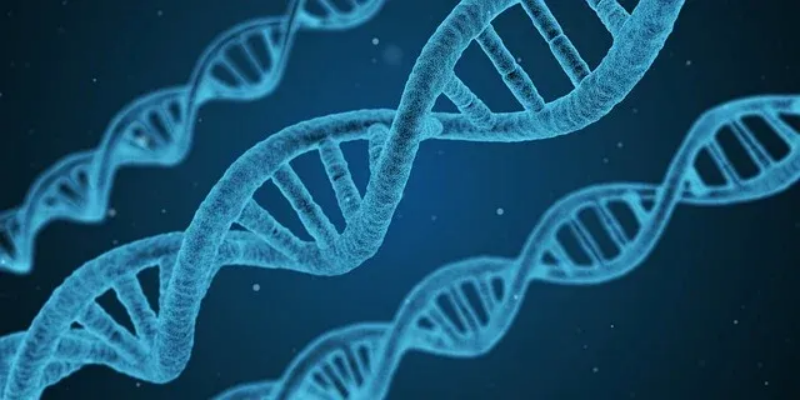What types of "genetic testing" are available for lymphoma patients? What are their respective functions?
We know that the occurrence of most tumors is related to "genetic mutations in cells." Lymphoma is, of course, no exception.
Lymphoma cells typically have various abnormal genetic mutations.

图片来源:pixabay
Every person’s DNA is unique, and every patient's "lymphoma cells" are also one of a kind.
Why, even with the same lymphoma diagnosis and classification, do treatment outcomes vary so significantly?
This is where we need to look for answers in genetic mutations.With the continuous advancement of genetic research technology, genetic testing for lymphoma has moved from the laboratory stage to practical application. Doctors can now analyze the "genetic mutation characteristics of lymphoma cells" to clarify the unique properties of each patient's lymphoma cells. For example:
- The malignancy level of the lymphoma
- The lymphoma's sensitivity to drug treatments
- Whether the lymphoma will achieve sufficient remission after treatment
- Predicting the long-term survival rate of lymphoma, etc.
Therefore, doctors hope that through individualized lymphoma genetic testing, each patient can: be fully prepared, take targeted action, hit the mark, and avoid future complications!

图片来源:pixabay
However, when faced with relatively complex and expensive genetic testing, many patients may feel confused:
What is genetic testing?
What are the differences in the purposes of gene rearrangement, second-generation genetic testing, and ctDNA testing?
Do lymphoma patients have to undergo genetic testing?
When is genetic testing necessary?Let's address these questions now!
The three most commonly used genetic tests currently:
Gene Rearrangement Testing:
It is divided into two types:
- IgH gene rearrangement positive indicates "B-cell lymphoma."
- TCR gene rearrangement positive indicates "T-cell lymphoma or NK/T-cell lymphoma."
"Gene rearrangement positive" means that tumor cells have been detected.
Purpose: To help diagnose whether it is lymphoma.
- Therefore, this test:Cannot provide various genetic mutation characteristics of lymphoma cells
- Cannot guide drug selection
- Cannot determine the malignancy level
- Cannot determine whether the lymphoma is "easily treatable or hard to treat."
Second-Generation Genetic Sequencing:
This test specifically detects genetic mutations in lymphoma cells. When lymphoma specialists mention "genetic testing" or "genetic sequencing," they are often referring to second-generation genetic sequencing.
Purpose and Advantages:
- To identify the underlying reasons for varying treatment responses in each tumor patient
- To help select targeted drugs, especially those that act on specific genetic mutations
- To assess the malignancy level of the tumor
- To determine whether the lymphoma is "easily treatable or difficult to treat"
- To assist in developing treatment strategies, etc.
Disadvantages:
- The report results are complex, and the analysis requires experience
- Expensive, with costs related to the number of genes tested and their sensitivity
- Due to its high cost, care must be taken to ensure its feasibility, the correct selection of specimens, and the appropriateness of the test range to avoid unnecessary waste.
ctDNA Testing:
What is ctDNA? It refers to tumor-associated genetic fragments that exist in circulation (mostly referring to blood circulation, but sometimes cerebrospinal fluid circulation).
As the name suggests, detecting ctDNA only requires a blood or cerebrospinal fluid sample, without the need for surgery or tumor biopsy, which is why it is also called "liquid biopsy."So, where does ctDNA come from?
Theoretically, when lymphoma cells appear, they release a certain amount of their unique DNA into the blood during their growth and metabolism, forming detectable ctDNA. Even in the early stages of lymphoma formation, when PET-CT may not be able to detect the lesions, ctDNA has already appeared in the blood, providing a trace to identify lymphoma. This offers a powerful tool for monitoring early relapse of lymphoma.Since these are tumor-specific genetic fragments, each is unique.
Therefore, the laboratory needs to retain second-generation sequencing data of lymphoma tumor tissue as a reference template, allowing for targeted tracking of related ctDNA in the future, enabling monitoring of tumor progression.

Image source: The internet
For example, if a tumor has these "four flower-like" characteristic mutations, after treatment, regular blood tests can be done to check for the corresponding shapes of flowers in the blood (since each tumor is different, second-generation sequencing mutation data is needed to determine the tumor's characteristic mutations).
Key Summary:
- Gene rearrangement can be used to identify whether or not it is lymphoma.
- Second-generation genetic sequencing of tumor tissue can provide a comprehensive understanding of lymphoma's genetic characteristics, which is most valuable for treatment and prognosis.
- ctDNA blood testing is convenient and can be regularly monitored. It can serve as an indicator for monitoring the depth of remission after lymphoma treatment and the potential for early relapse.
Do you understand?
Next time, we will discuss "Under what circumstances should genetic testing be done to fully maximize its value and save treatment costs?" Don't miss it!4o mini















